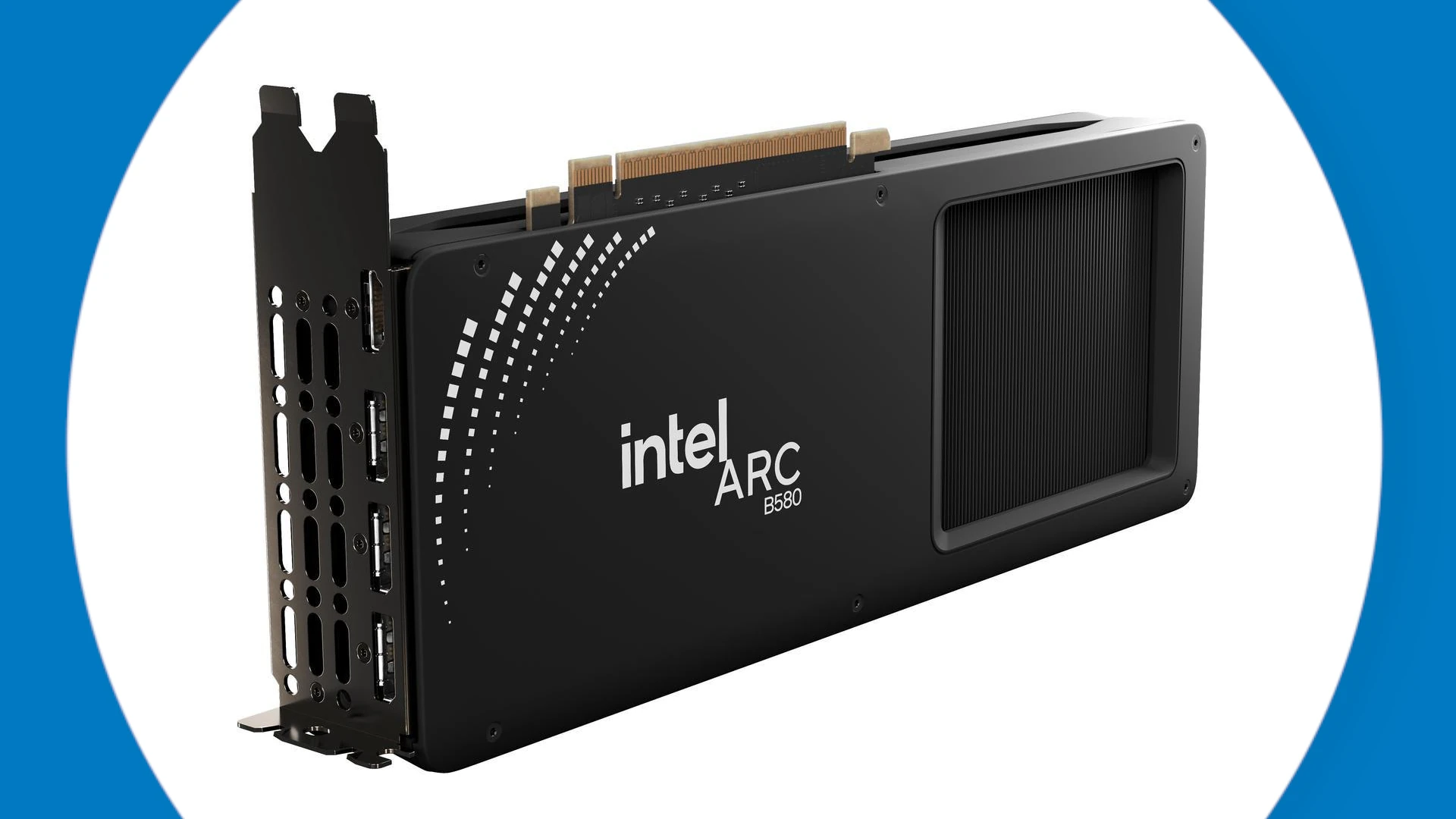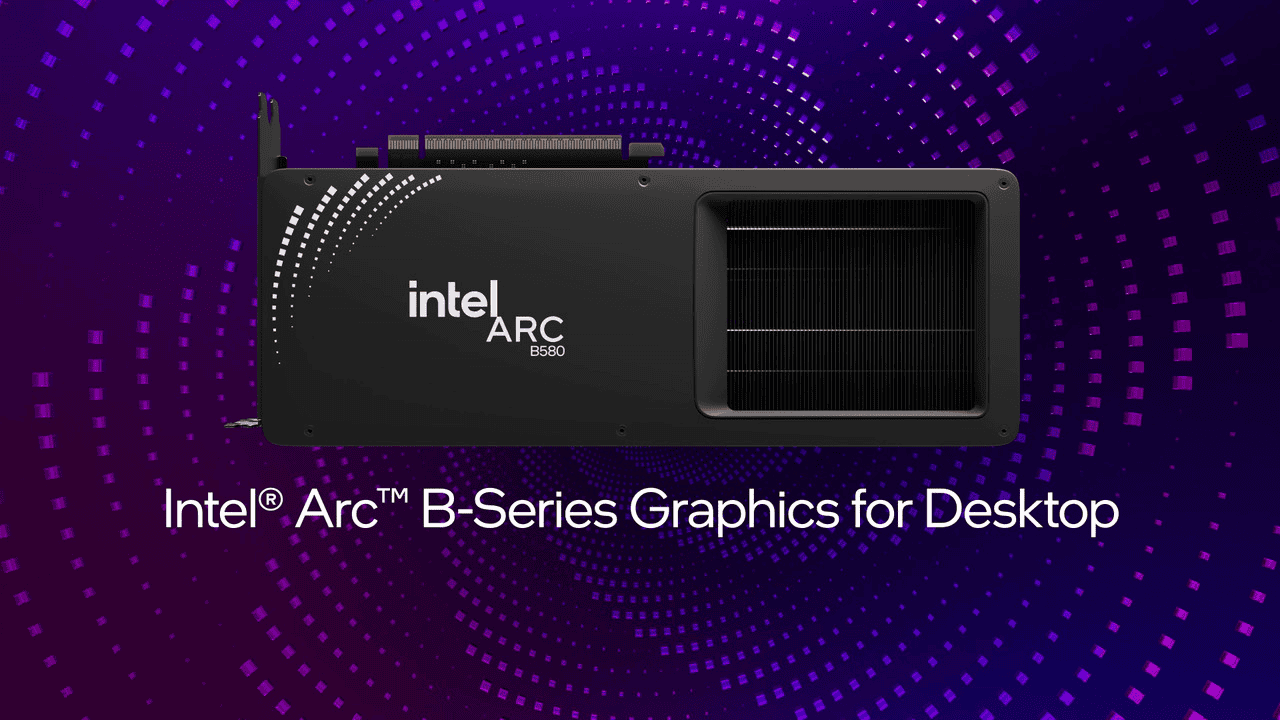Intel’s latest graphics card, the Arc B580, aims to shake up the budget gaming market. Priced at $249, it offers 12GB of memory and impressive performance that rivals more expensive options. The Arc B580 outperforms the NVIDIA RTX 4060 8GB in many games while costing $50 less, making it a compelling choice for budget-conscious gamers.
The Arc B580 provides excellent value with its competitive price and strong capabilities. It handles 1440p gaming without major compromises and boasts superior ray tracing abilities compared to similarly priced cards. This new Intel offering marks a significant step forward in affordable graphics performance.
Gamers seeking a capable GPU without breaking the bank now have a fresh option to consider. The Arc B580’s arrival challenges the dominance of established players in the sub-$300 segment. Its combination of ample memory, solid performance, and attractive pricing positions it as a potential new favorite for PC builders on a budget.
Budget-Friendly Gaming: Intel Arc B580 vs. RTX 4060
In the world of PC gaming, choosing the right graphics card can significantly impact the gaming experience. The constant advancements in GPU technology create a dynamic market where price and performance are carefully balanced. Recent releases have brought interesting competition to the mid-range segment, offering gamers some compelling choices.
The Price Point Advantage
The Intel Arc A750, recently rebranded as the Arc B580, presents a compelling option for budget-conscious gamers. Its price of $249 directly challenges the more expensive Nvidia RTX 4060. This lower price makes it an attractive alternative for those seeking strong performance without a premium price tag.

Performance Comparison
While the RTX 4060 generally outperforms the Arc B580 in raw performance, the difference is not always significant, especially at 1080p resolution. In many games, the Arc B580 offers playable frame rates at high settings. This makes it a viable choice for gamers who prioritize value.
Driver updates have significantly improved the Arc B580’s performance since its initial release. Intel has actively addressed early driver issues, resulting in substantial gains in frame rates and stability. This ongoing improvement makes it a stronger competitor.

Key Specifications
Intel Arc B580
- 12GB GDDR6 memory
- Xe-HPG architecture
- DirectX 12 Ultimate support
Nvidia RTX 4060
- 8GB GDDR6 memory
- Ada Lovelace architecture
- DLSS 3 support
Feature Set and Technologies
Both cards support modern gaming technologies like ray tracing and upscaling. Nvidia’s DLSS 3 offers a significant advantage in supported titles, providing substantial performance boosts. Intel’s XeSS upscaling technology is improving quickly, though it has a smaller library of supported games. The Arc B580 offers 12GB of VRAM, which can be beneficial in some memory-intensive games at higher resolutions, compared to the RTX 4060’s 8GB.
Considerations for Gamers
Gamers should consider their specific needs and budget. If raw performance is the top priority and budget is less of a concern, the RTX 4060 is generally the stronger card. However, if value is paramount and 1080p gaming is the primary focus, the Arc B580 provides excellent value. The extra VRAM on the Arc B580 could be useful for some users.
Specification Comparison
| Feature | Intel Arc B580 | Nvidia RTX 4060 |
|---|---|---|
| Price (USD) | $249 | Higher |
| Memory | 12GB GDDR6 | 8GB GDDR6 |
| Architecture | Xe-HPG | Ada Lovelace |
| Upscaling Technology | XeSS | DLSS 3 |
Key Takeaways
- Intel’s Arc B580 offers 12GB of memory and strong performance at $249
- The B580 often outperforms the pricier RTX 4060 8GB in gaming benchmarks
- This new GPU provides excellent value for 1440p gaming on a budget
Comparative Analysis of GPU Features
The Intel Arc B580 and NVIDIA RTX 4060 represent two competing options in the budget gaming GPU market. These cards differ in key areas such as architecture, memory configuration, and performance characteristics.
Intel’s Entry with Arc B580 vs NVIDIA’s RTX 4060
Intel’s Arc B580 marks a significant step into the GPU market. The card offers 12GB of GDDR6 memory, which is more than the RTX 4060’s 8GB. This extra memory can be beneficial for games with high texture demands.
The B580 uses Intel’s Xe architecture, while the RTX 4060 relies on NVIDIA’s Ada Lovelace design. Both cards support ray tracing, but NVIDIA has more experience in this area.
Price is a key differentiator. The Arc B580 is priced at $249, making it $51 cheaper than the RTX 4060’s $300 price tag.
Graphics Card Specifications and Architecture
The Arc B580 features Intel’s Xe cores, which are designed for efficient parallel processing. It has a graphics clock that can boost up to 2.7 GHz.
NVIDIA’s RTX 4060 uses the company’s proven GPU architecture. It includes specialized ray tracing cores and tensor cores for AI-enhanced graphics features.
Both cards support PCIe 4.0, ensuring compatibility with modern motherboards. The B580 has a 192-bit memory interface, wider than the RTX 4060’s 128-bit interface.
Power consumption is similar between the two, with both cards requiring a single 8-pin power connector.
Memory Allocation: VRAM Differences and Bandwidth
The Arc B580’s 12GB of VRAM is a standout feature in this price range. This larger memory pool can handle more complex textures and higher resolutions.
NVIDIA’s RTX 4060 comes with 8GB of GDDR6 memory. While less than the B580, it’s still adequate for most 1080p gaming scenarios.
Memory bandwidth is crucial for GPU performance. The B580’s wider 192-bit bus provides higher theoretical bandwidth compared to the RTX 4060’s 128-bit interface.
In practice, the extra VRAM and bandwidth of the B580 can be beneficial for games that use large textures or run at higher resolutions.
Performance Evaluation and Gaming Benchmarking
The Intel Arc B580 12GB demonstrates competitive performance against the NVIDIA RTX 4060 8GB in various gaming scenarios. It excels in 1080p and 1440p gaming, ray tracing, and leverages AI-enhanced features for improved frame rates and reduced latency.
1080p and 1440p Gaming Capabilities
The Arc B580 delivers superb 1080p performance at its $249 price point. It handles most modern titles at high settings with smooth frame rates. At 1440p, the card maintains playable frame rates without severe compromises.
In popular games like Cyberpunk 2077 and Returnal, the B580 matches or slightly outperforms the RTX 4060. The extra 4GB of VRAM gives it an edge in memory-intensive scenarios.
Benchmark results show:
- 1080p Ultra: 60-100 FPS in most AAA titles
- 1440p High: 50-80 FPS in demanding games
The B580’s clock speeds and power draw are optimized for efficiency, allowing it to maintain consistent performance during extended gaming sessions.
Ray Tracing Performance and AI Enhancement Features
Intel’s ray tracing implementation in the Arc B580 shows impressive results, often matching or surpassing the RTX 4060 in ray-traced games. This performance is particularly noteworthy given the B580’s lower price point.
Key ray tracing features include:
- Hardware-accelerated ray tracing
- Support for DirectX Ray Tracing (DXR)
- Competitive performance in titles like Cyberpunk 2077
The B580 utilizes XeSS 2, Intel’s AI-powered super resolution technology. XeSS 2 offers quality comparable to NVIDIA’s DLSS, boosting frame rates in supported games without significant image quality loss.
Frame Generation Technologies and Latency Considerations
The Arc B580 incorporates frame generation technology similar to NVIDIA’s DLSS 3. This feature synthesizes additional frames to increase perceived smoothness and responsiveness in supported games.
Intel’s Xe Low Latency technology works to minimize input lag, ensuring a responsive gaming experience. While not quite matching NVIDIA’s Reflex, it provides a noticeable improvement over standard v-sync implementations.
Frame generation benchmarks show:
- 20-40% FPS increase in supported titles
- Slight increase in latency compared to native rendering
The B580’s frame generation and low latency features work best in DirectX 12 titles, offering gamers a competitive edge in fast-paced games.







